PowerPoint Presentation on Acute Coronary Syndrome Core Measures
VerifiedAdded on 2023/06/15
|10
|705
|303
Presentation
AI Summary
This presentation provides an overview of Acute Coronary Syndrome (ACS) core measures, focusing on evidence-based practice and expected outcomes. It begins by explaining ACS core measures, including the importance of timely aspirin administration, ACEI or ARB prescriptions for left ventricular systolic dysfunction, smoking cessation counseling, beta-blocker prescriptions, and statin prescriptions upon discharge. The presentation then discusses the role of Clinical Information Systems (CIS) in managing ACS, highlighting the steps involved in data collection, storage, extraction, transmission, presentation, analysis, and interpretation. It introduces the Acute Cardiac Ischemia Time-Insensitive Predictive Instrument Information System (ACI-TIPI-IS) as a tool for real-time decision support and performance improvement. Finally, the presentation outlines expected outcomes such as improved patient safety, satisfaction, and healthcare quality, supported by peer-reviewed nursing journal articles. The presentation emphasizes the importance of risk stratification and prognostic information in managing ACS patients effectively.
1 out of 10
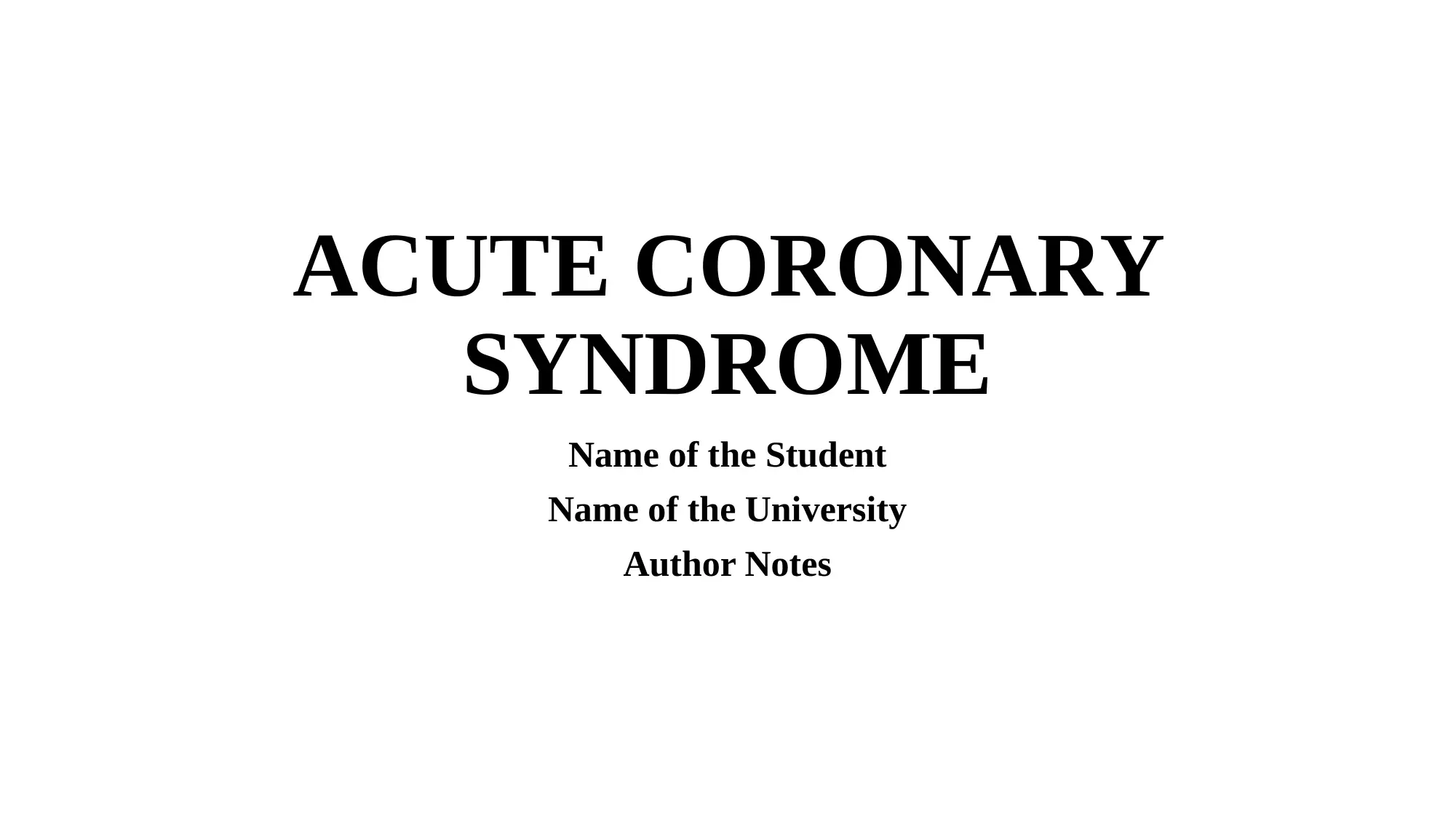
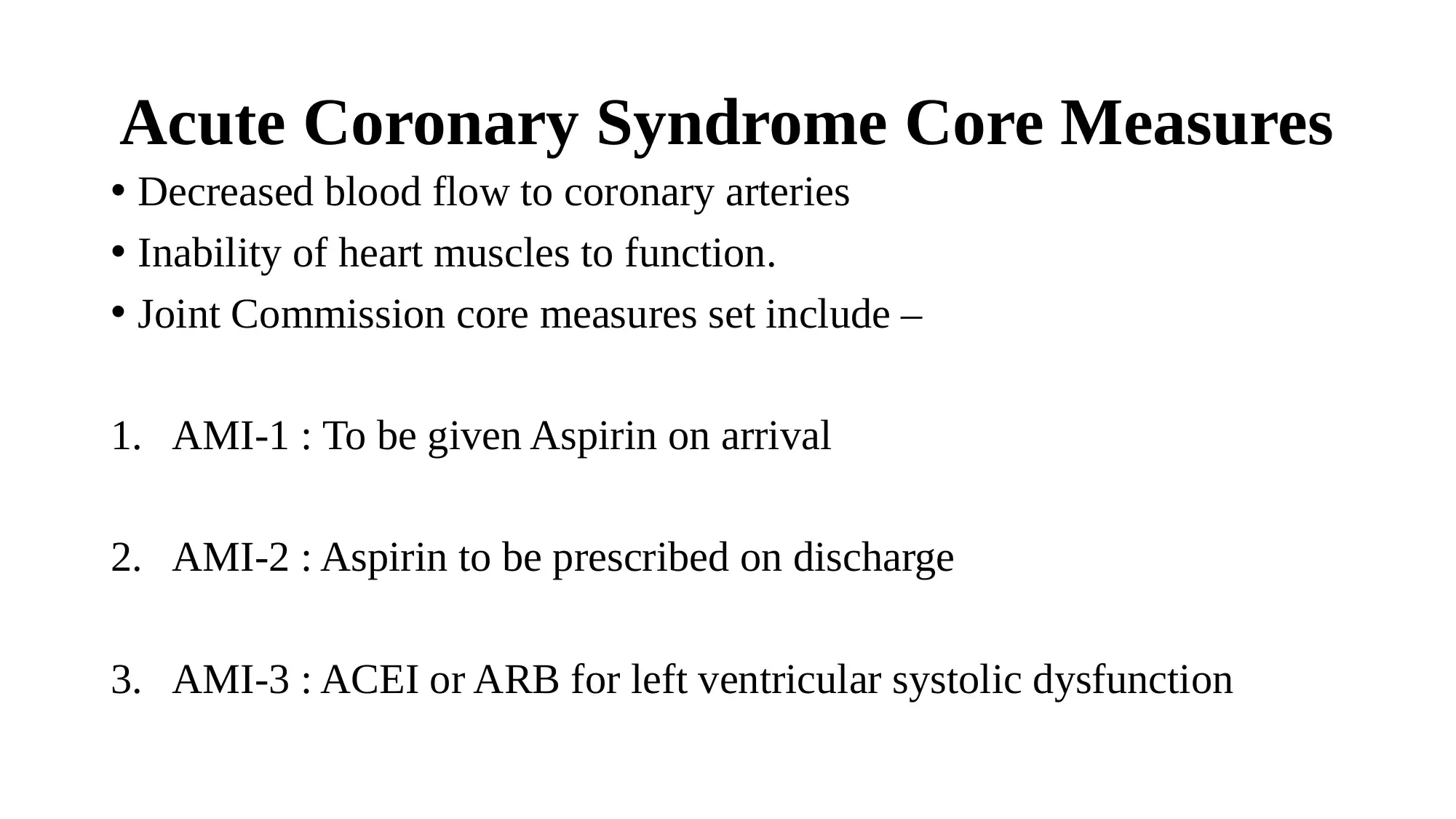
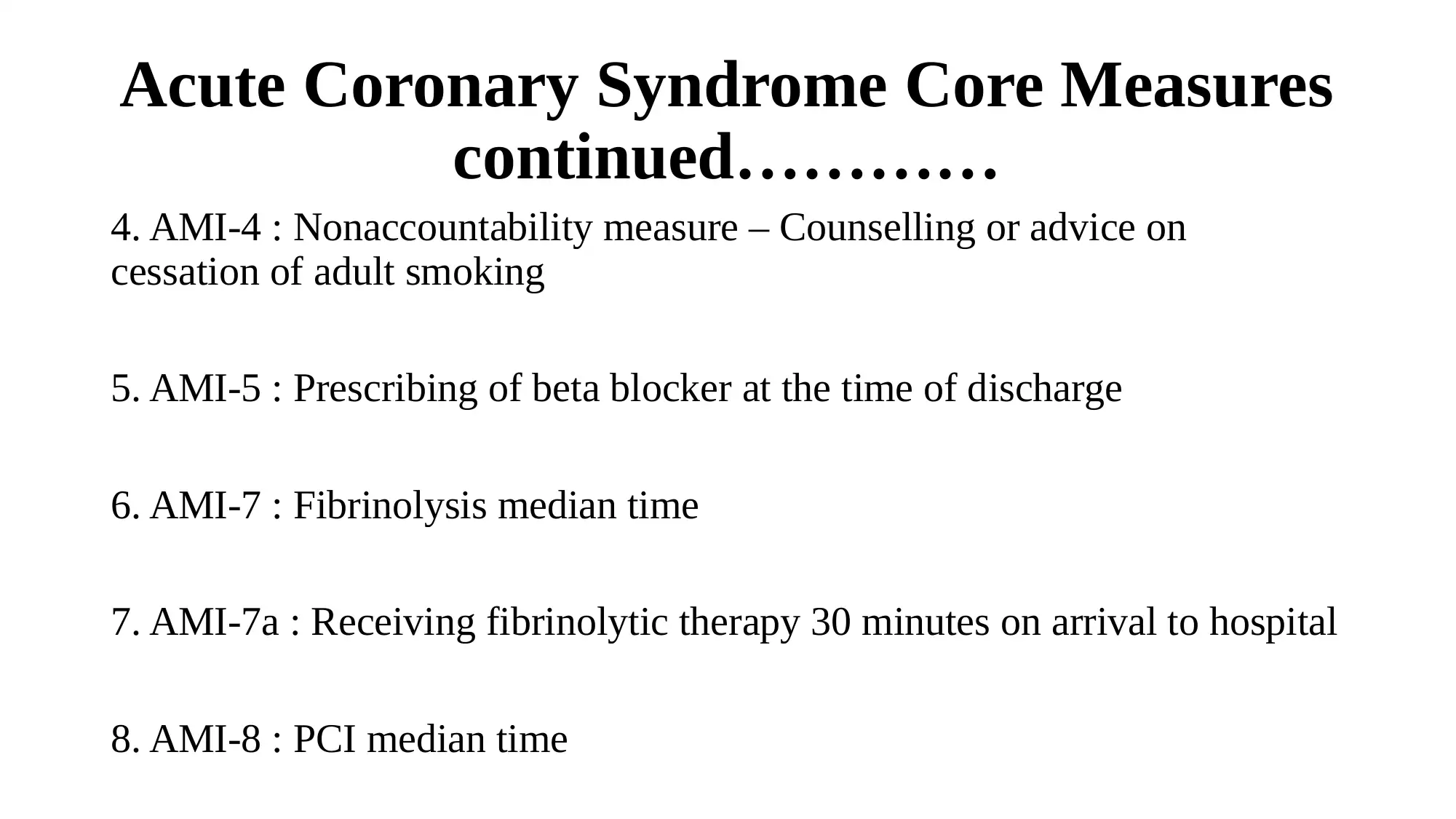

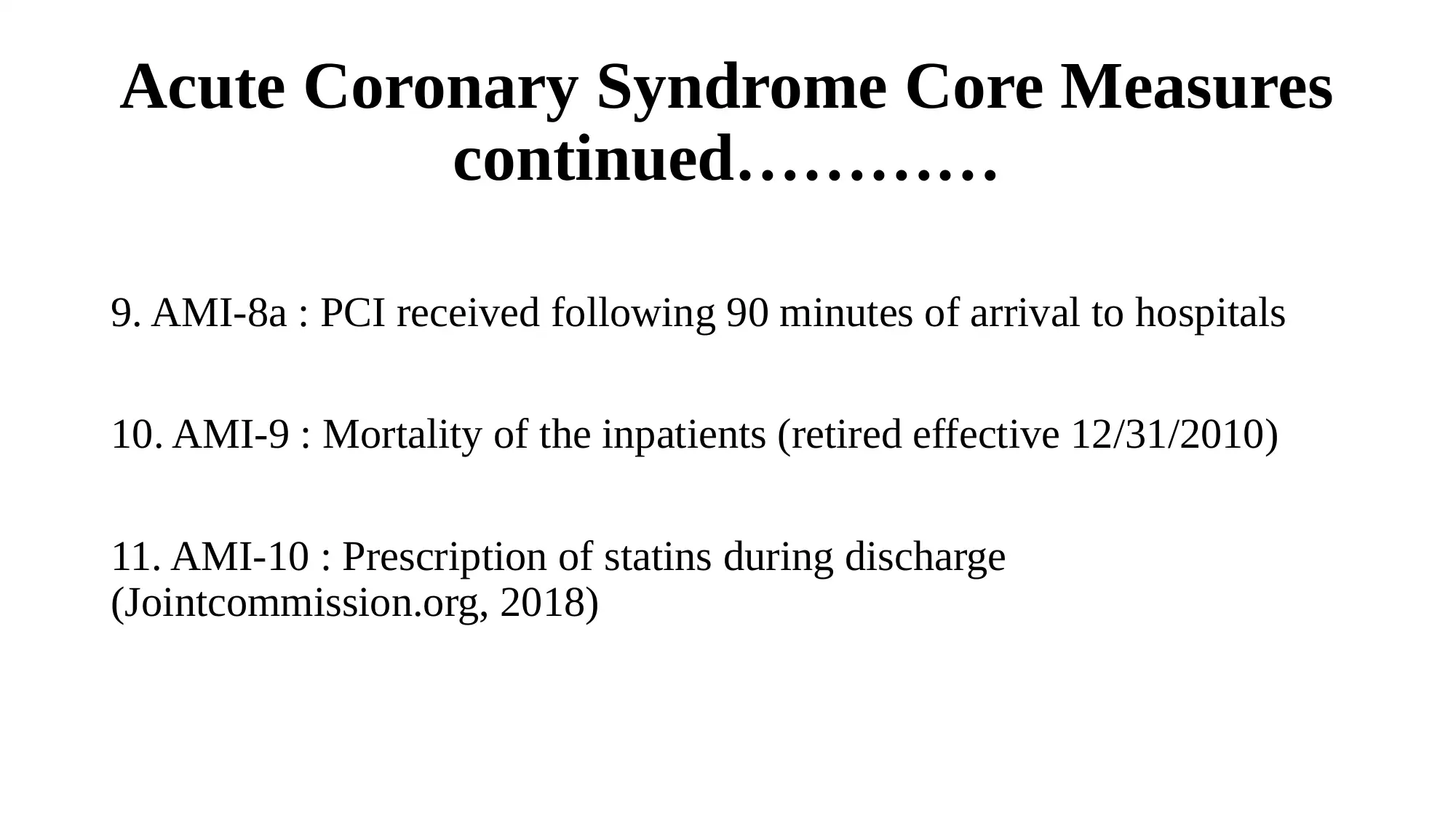
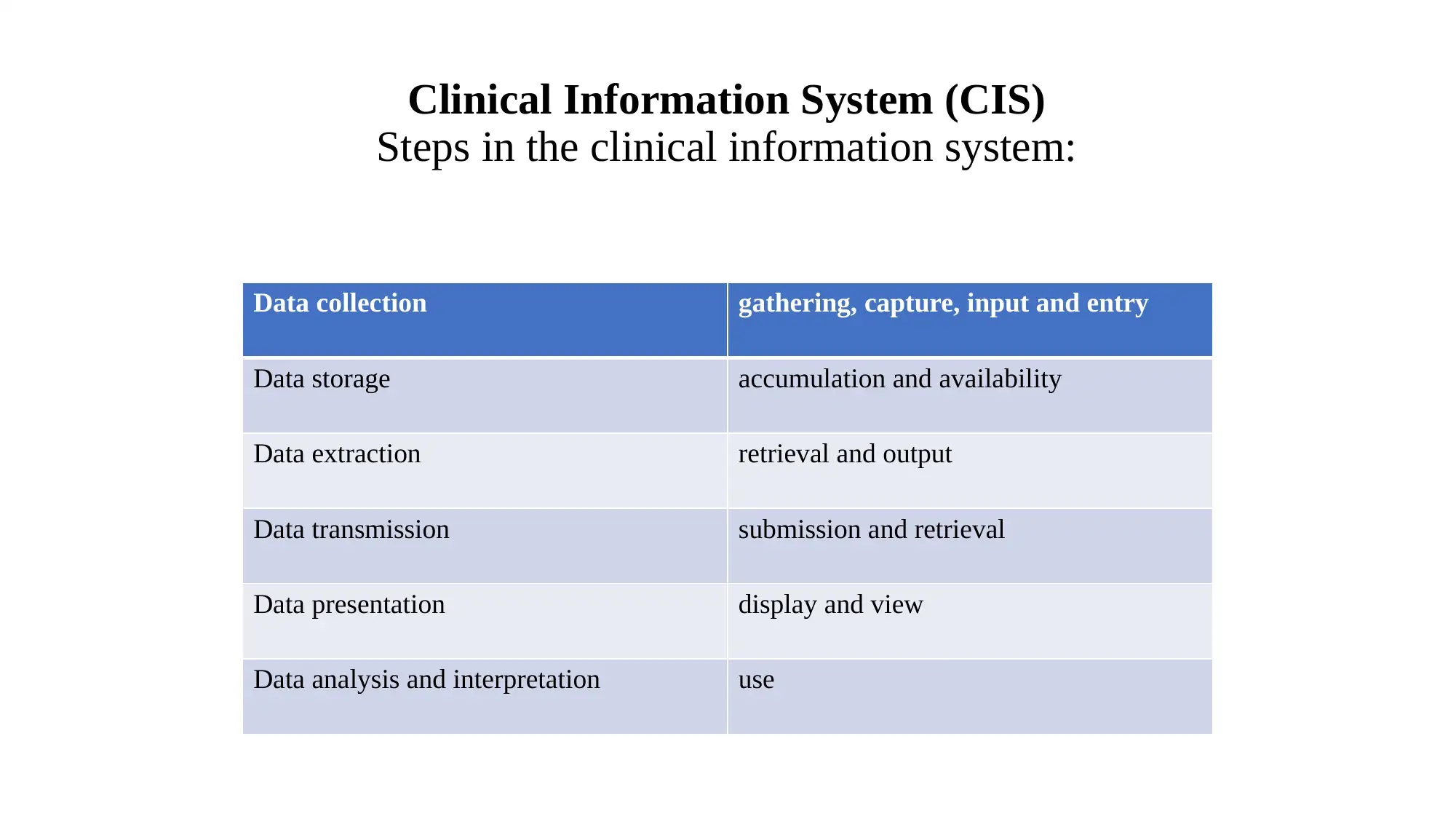
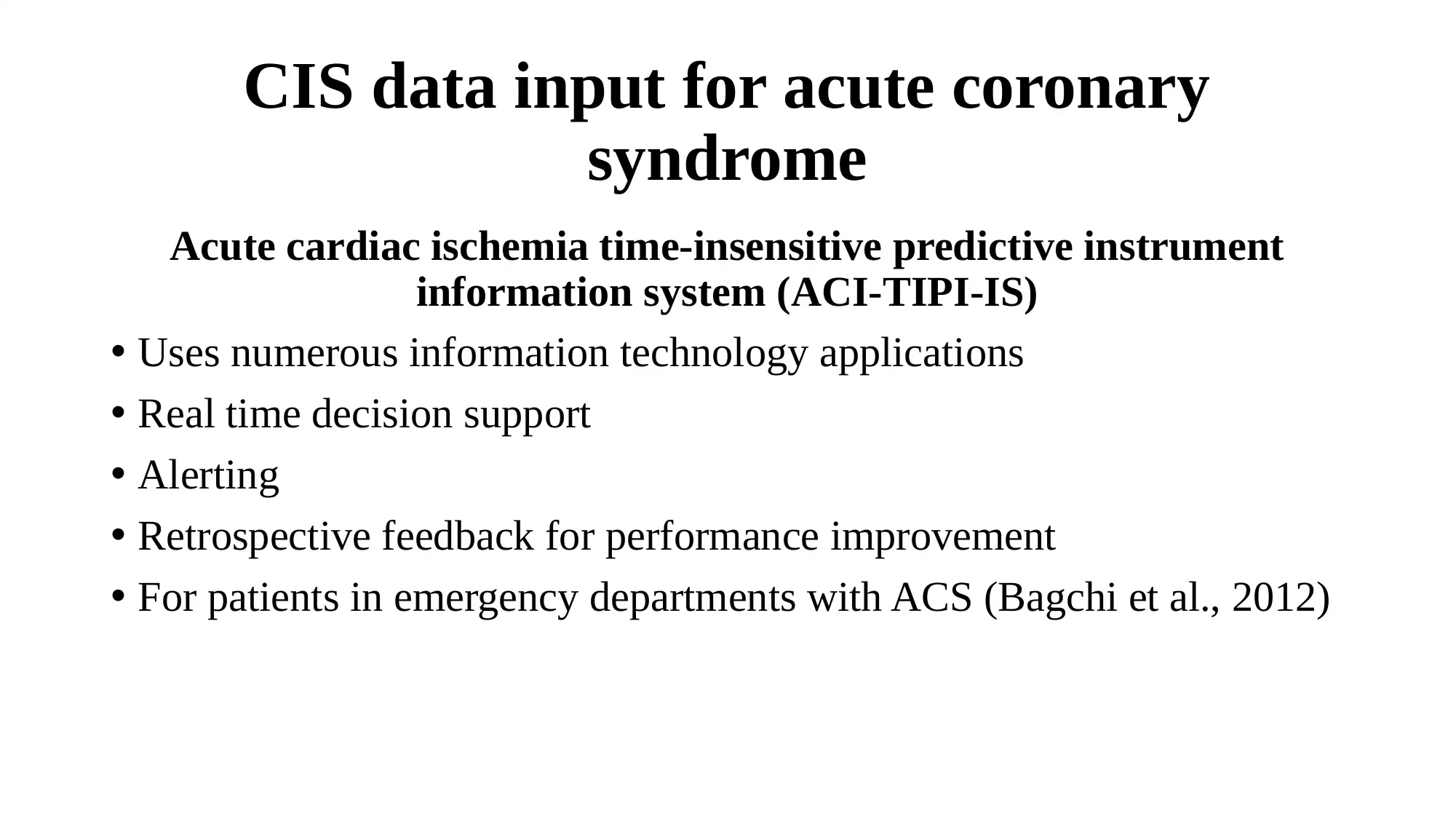
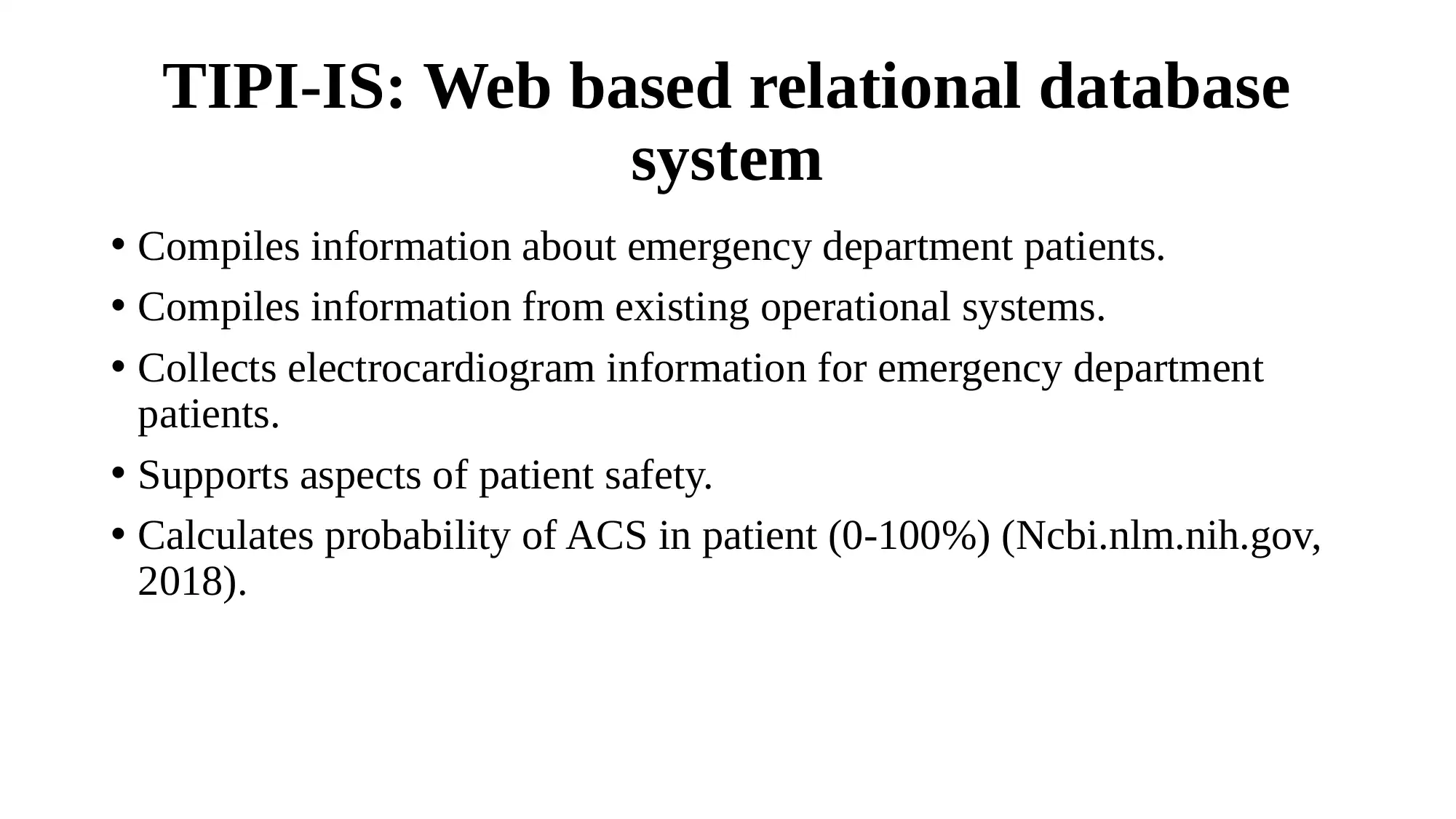
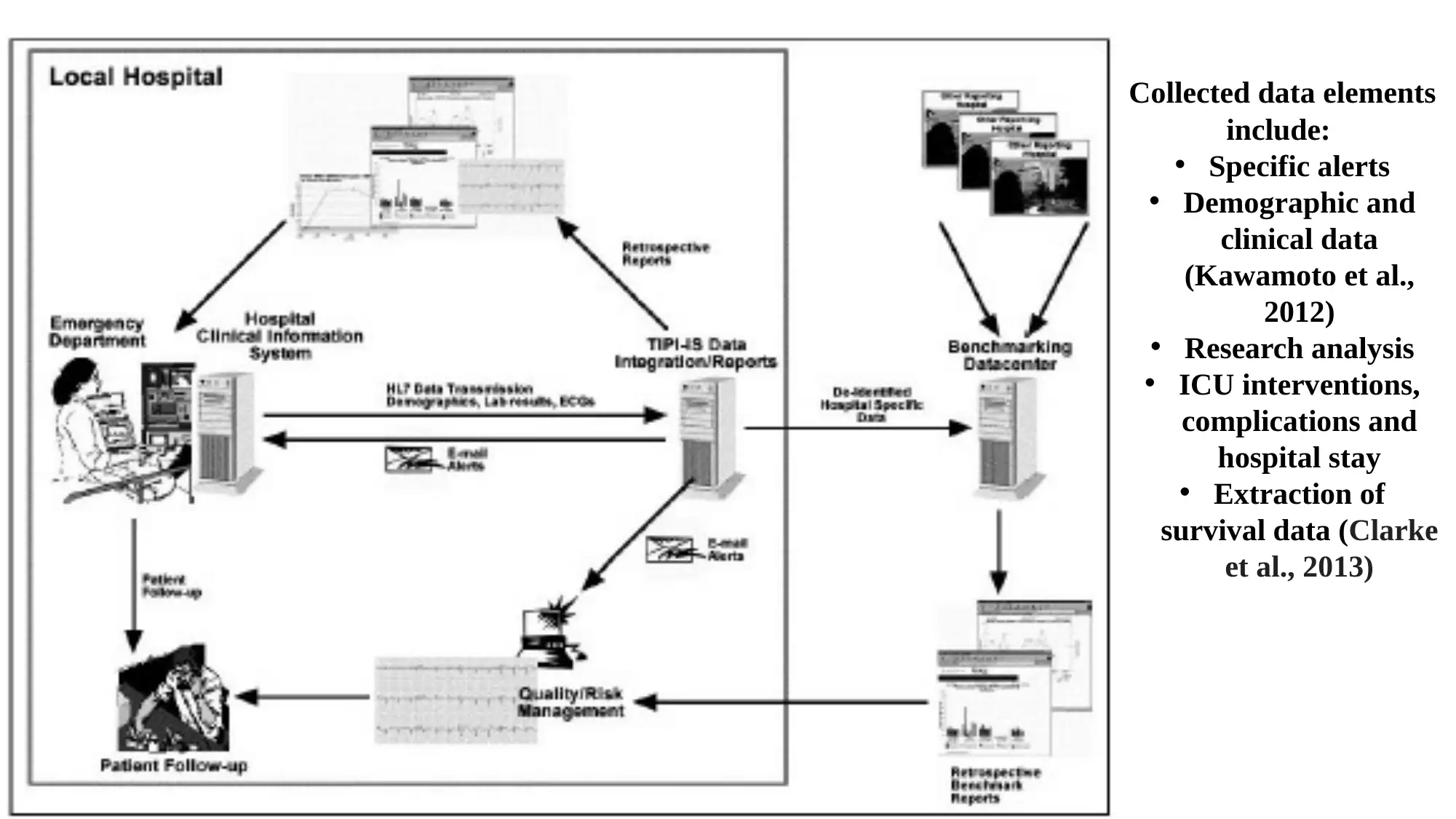
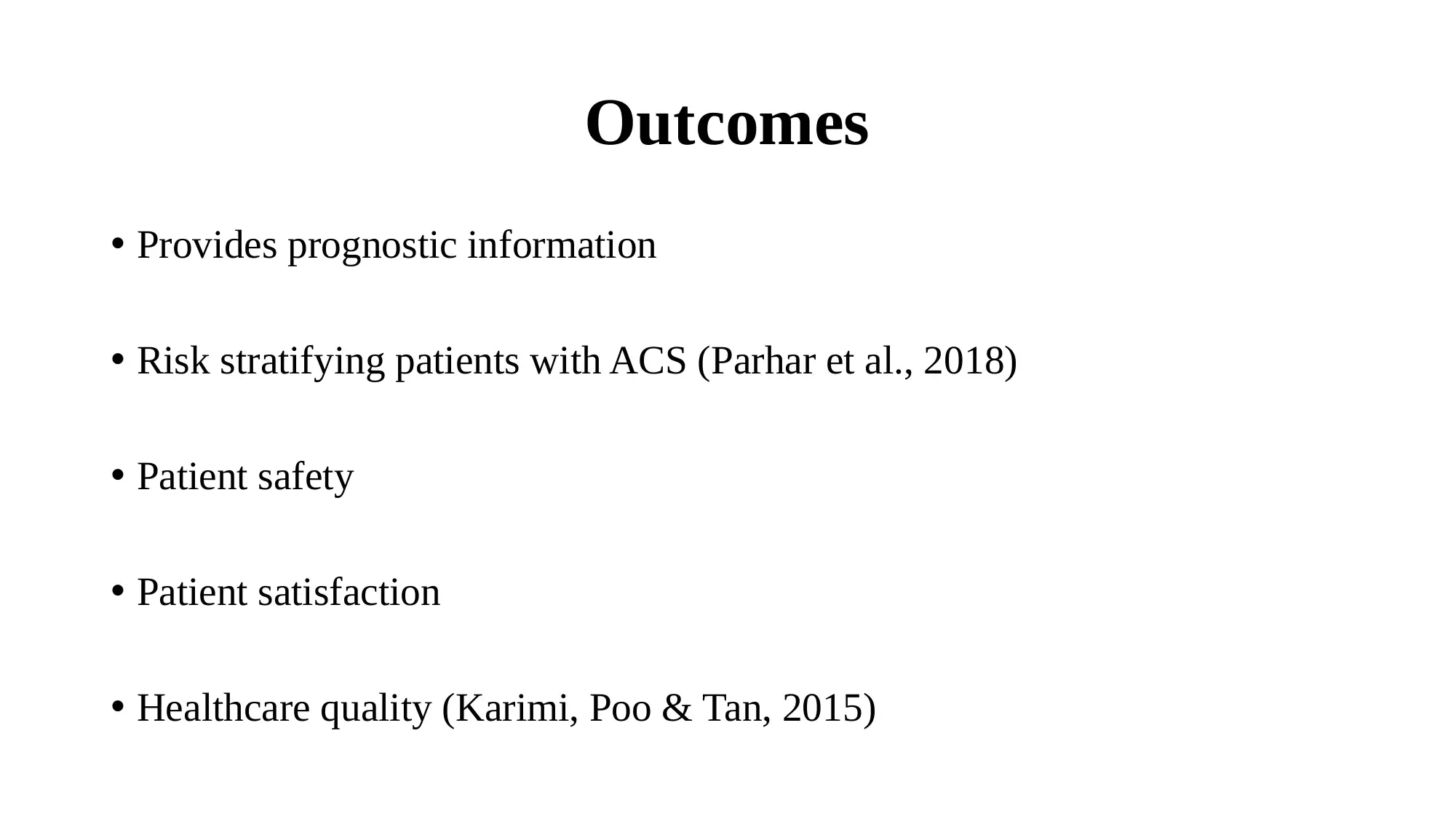
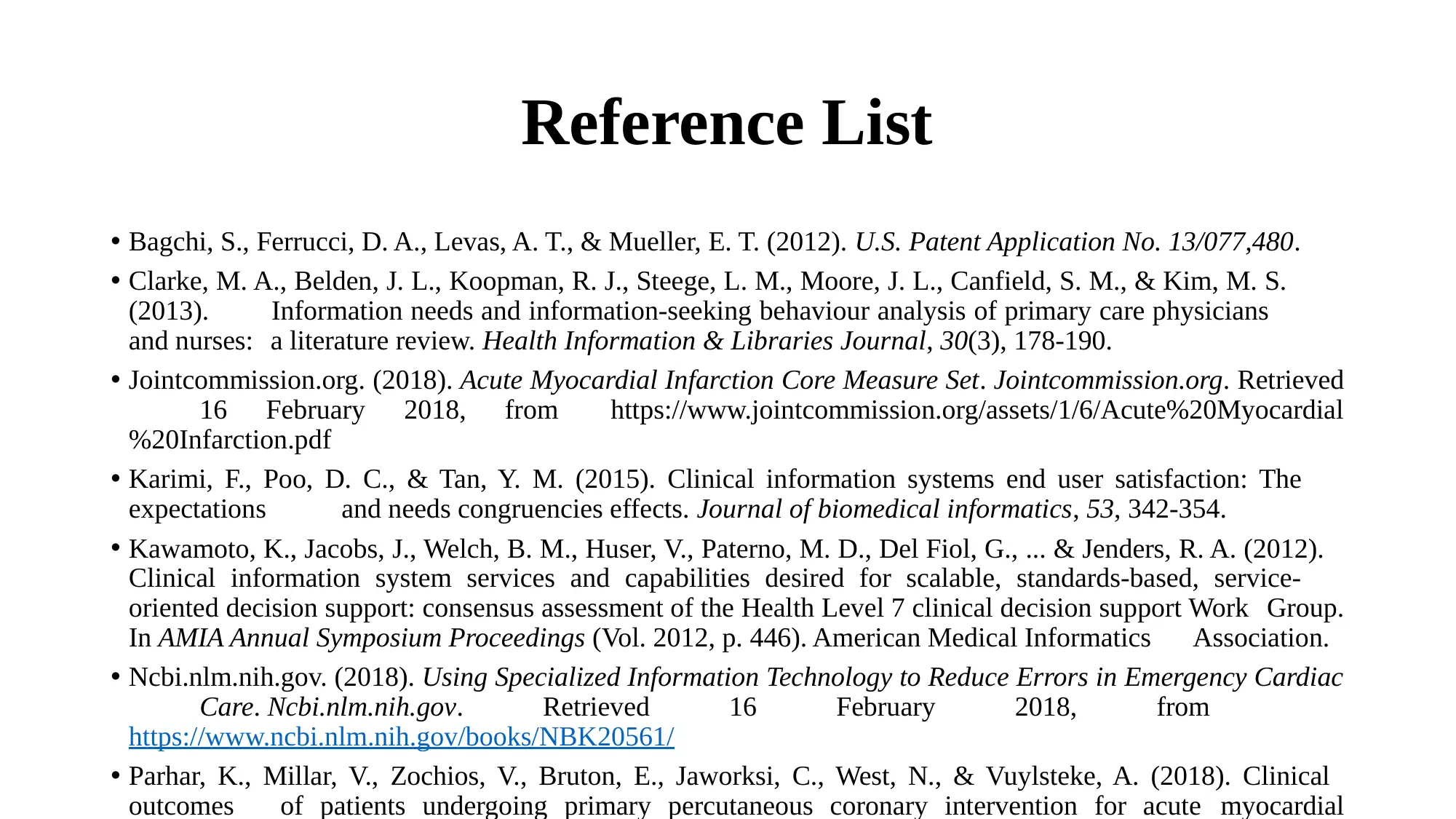

![[object Object]](/_next/static/media/star-bottom.7253800d.svg)